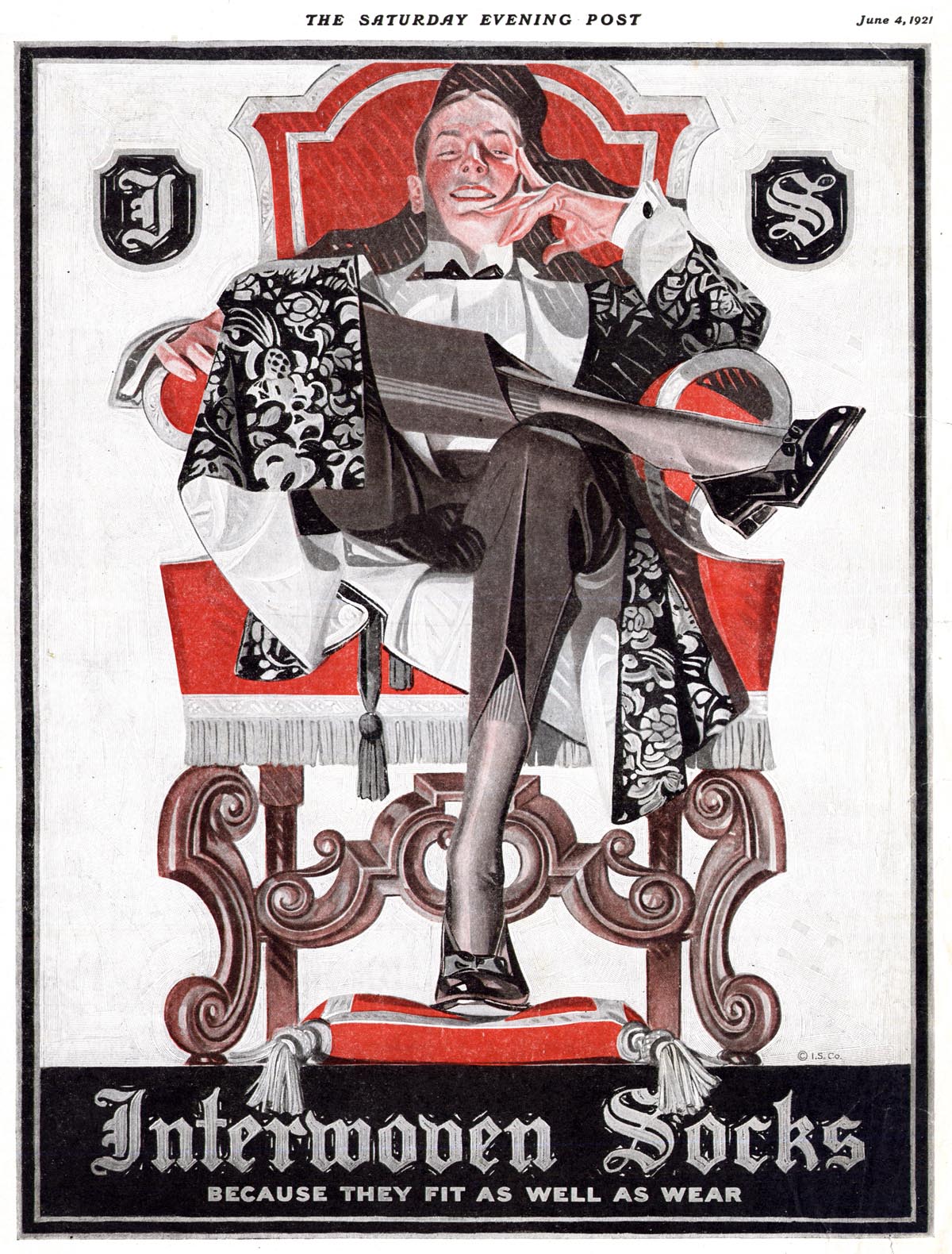
Speaking about his idol in a December 7, 1997 article in the Springfield Republican, Rockwell said, “I began working for ‘The Saturday Evening Post’ in 1916 and Leyendecker was my god. I actually used to, unbeknownst to him, follow him down the streets of New Rochelle, just to be close to him.”
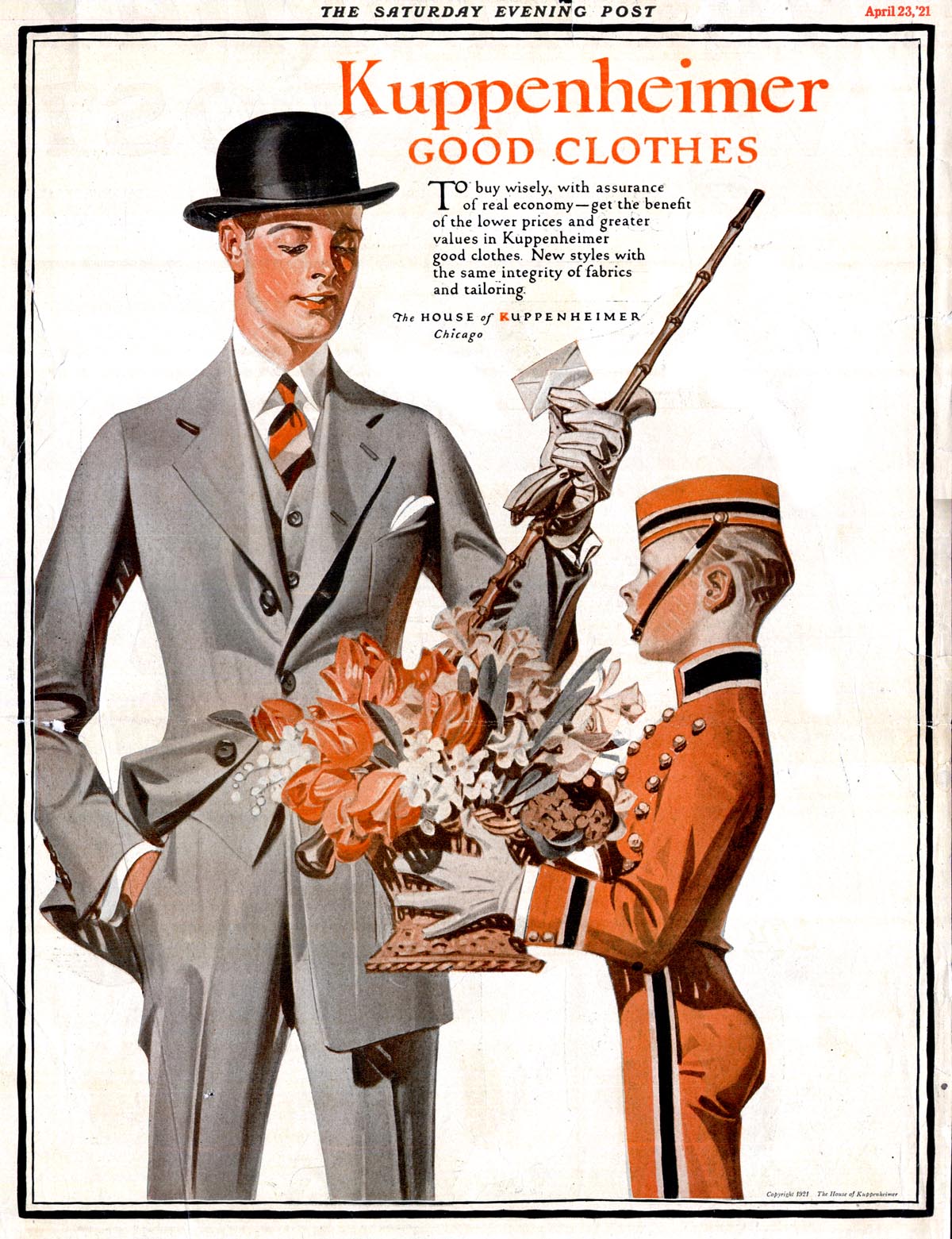
In Rockwell's autobiography, "My Adventures as an Illustrator," he acknowledges Leyendecker's influence and inspiration and devotes a chapter, "The Mansion on Mount Tom Road" to Leyendecker. He tells of their first social evening when J.C. and his brother Frank were invited to the Rockwell's home for dinner. Rockwell hired a cook to prepare a Thanksgiving dinner in July, complete with turkey and trimmings.

After a very awkward beginning of the evening, they were called in to dinner. When the cook came through the kitchen door with the turkey, she slipped on the edge of the rug and the turkey rolled under the table. Rockwell crawled under the table from one side and Leyendecker from the other. They met over the turkey which was lying on its side with stuffing gushing from its breast. "That smells good," Leyendecker said as he tasted the stuffing with his finger. When the turkey was put on another platter and dinner was served, the conversation and laughter flowed and the artists became fast friends and remained friends for over twenty-five years.
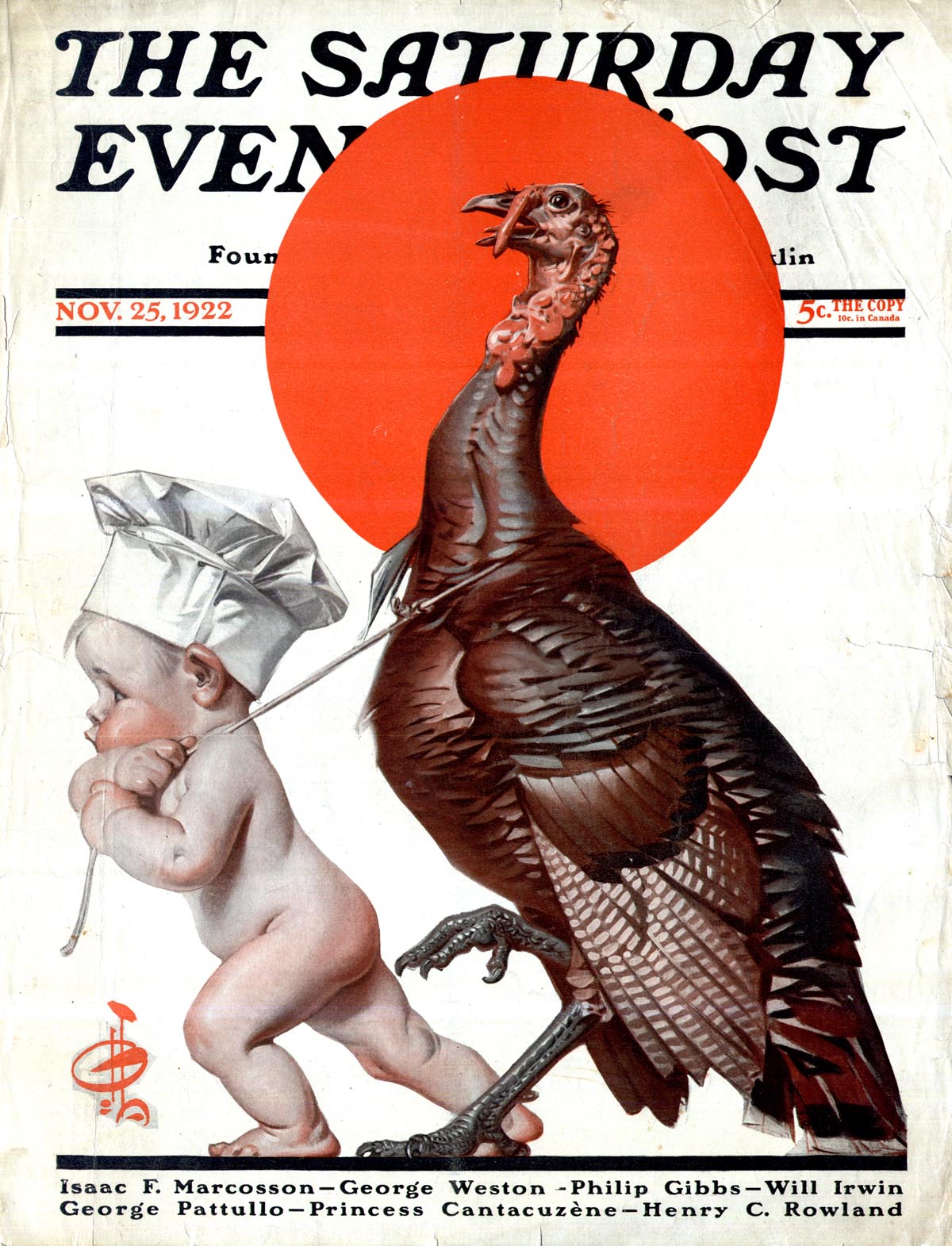
J.C. Leyendecker created 319 covers for The Saturday Evening Post. From 1903 to 1943, as one of the top cover artists, he was commissioned to do holiday issue covers including Thanksgiving, Christmas, New Years, Valentine's Day, July 4th and the forerunner of President's Day. He employed the Pilgrim and the turkey to signify Thanksgiving, Uncle Sam for July 4th and, in 1906, created the icon of the new-born baby as an emblem of the New Year. This became his own trademark.

Although his illlustrations appeared regularly in national magazines, it was his commercial work that established him most rapidly as one of the most sought-after illustrators of the day. The "Arrow Collar Man" became an overnight sensation and generated fan mail by the ton.
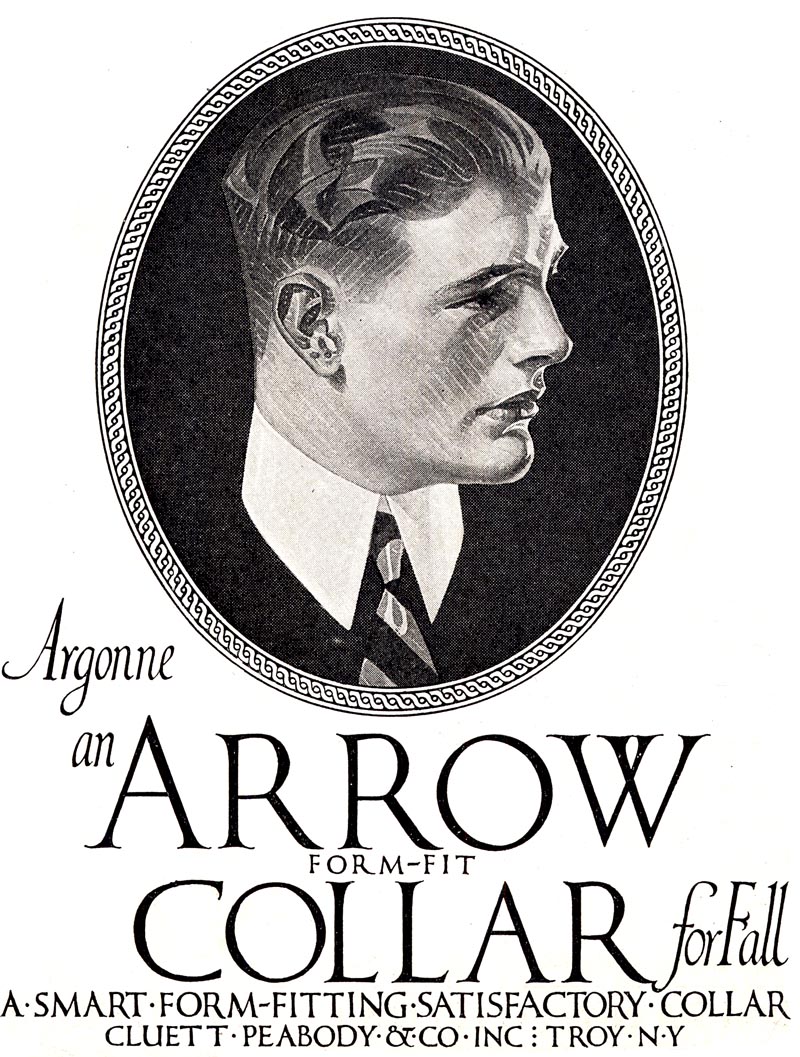
By evoking a youthful virile atmosphere, Leyendecker pioneered the advertising dictum that it is the lifestyle that sells. He established the prototype of the stylish American Male promoting fashions by B. Kuppenheimer, Hart Schaffner & Marx, and Interwoven Socks.
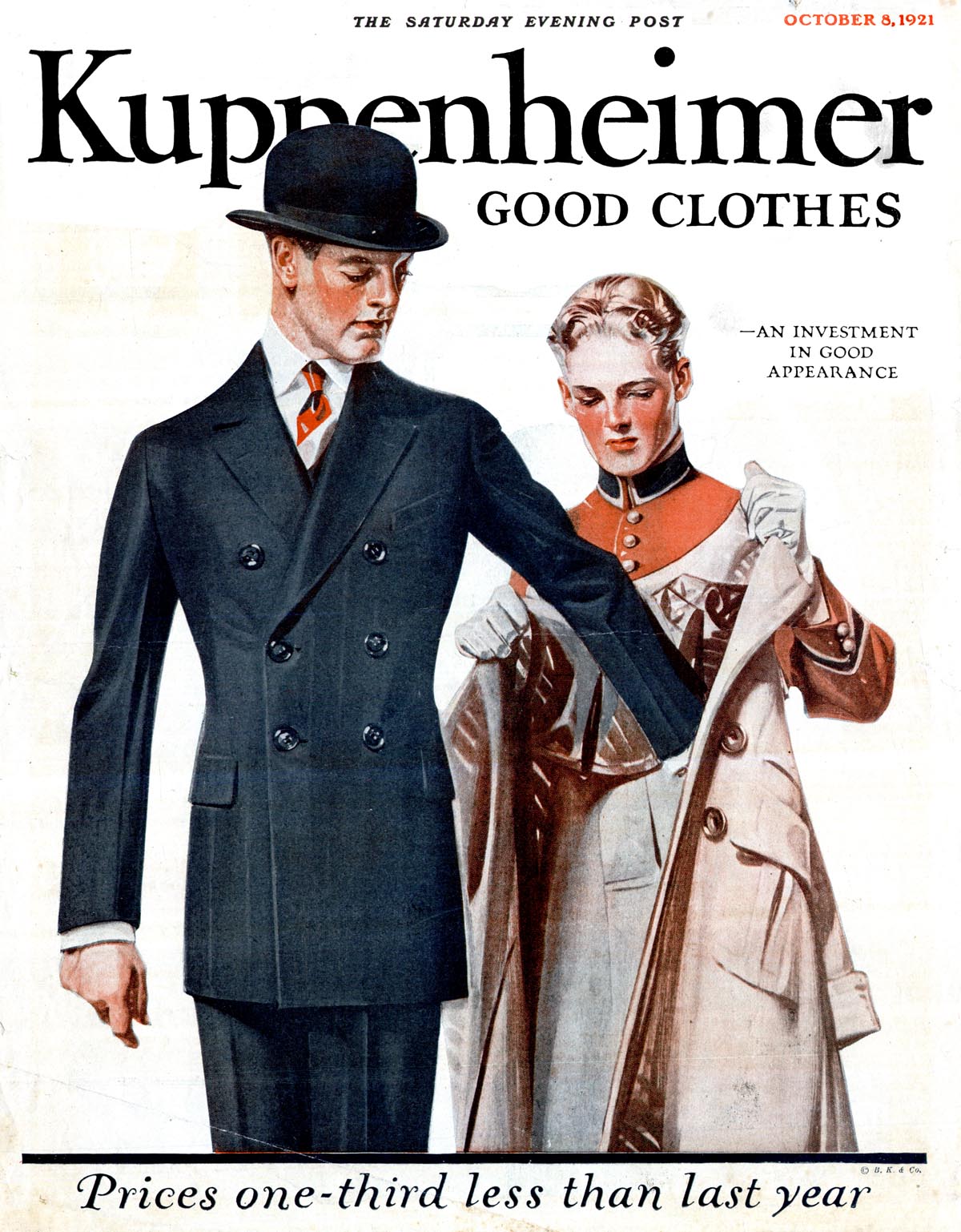
Born in Montabaur, Germany, J.C. Leyendecker emigrated to Chicago with his family in 1882 when he was eight. His career began in 1896, when he won first place in The Century cover competition and a commission to design a year's worth of monthly covers for The Inland Printer. Famed illustrator Maxfield Parrish won second prize in that same competition. With his prize money and savings, he and his younger brother Francis Xavier decided to study in Paris, where they remained over one year.
Around this time, the brothers developed a credo which was as effective in compelling them to produce their best work on time. "Buy more than you can afford...If every day you have to save yourself from ruin, every day you'll work." When they were young and successful, this credo could he a fun game, a kind of race for each to outdo himself and the other.
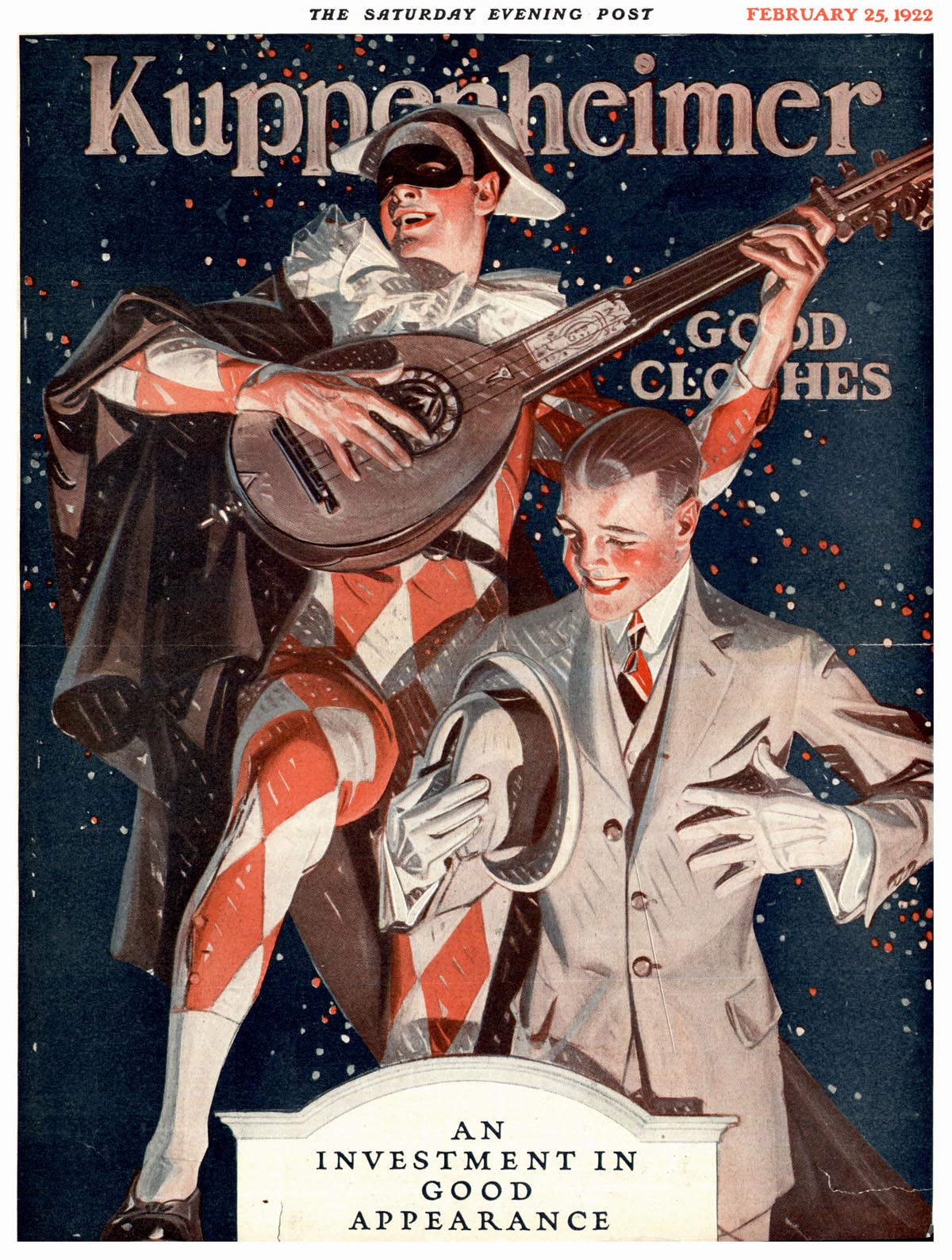
They made and spent large sums of money, dwarfing the previous income benchmarks for an illustrator. The culmination was the building of a chateau in New Rochelle with a separate wing for each studio.
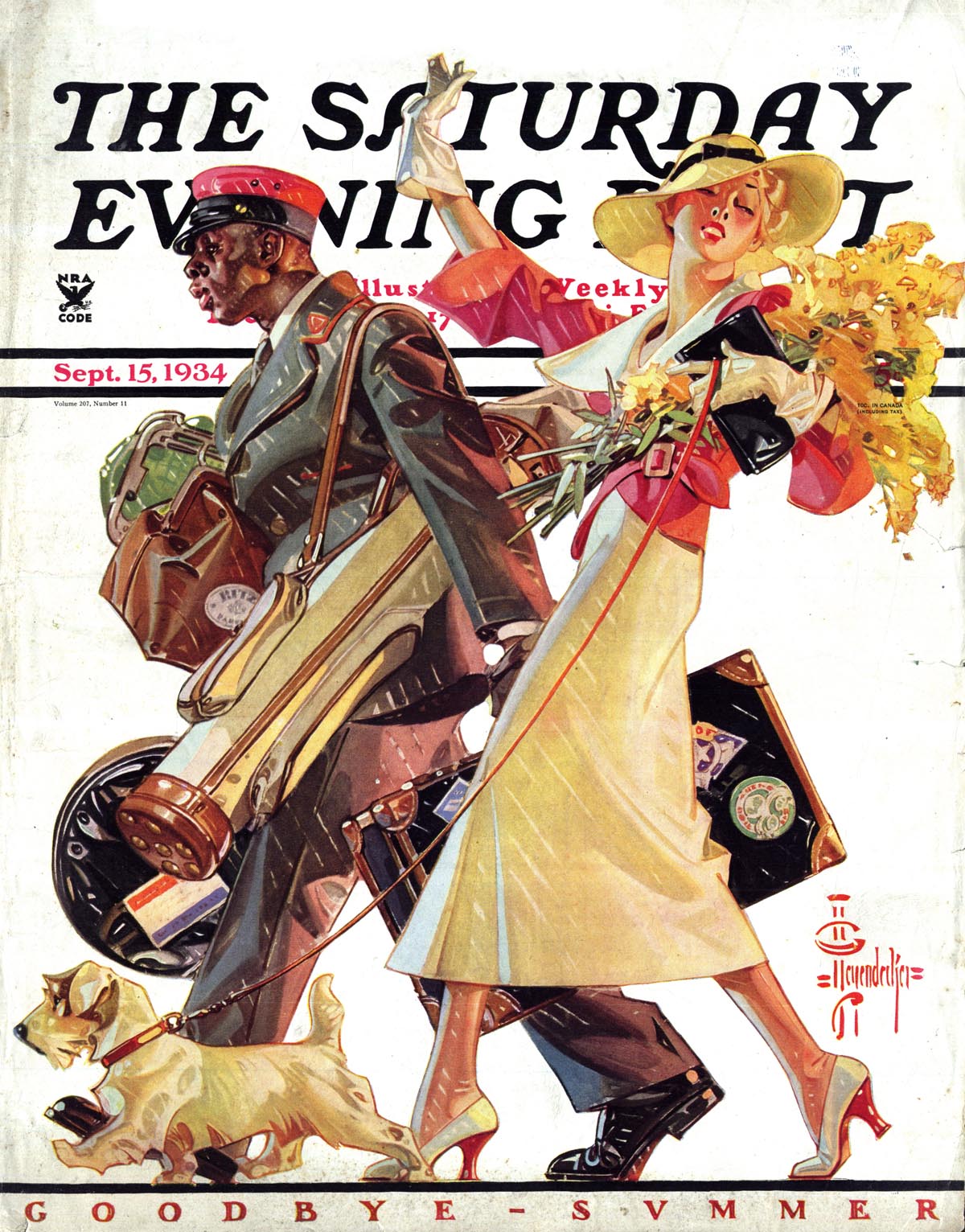
Frank was an excellent artist in his own right and executed a spectacular series of monthly covers for Collier's Weekly magazine from 1902 to 1905. At this point, he was the higher-profile of the two brothers.
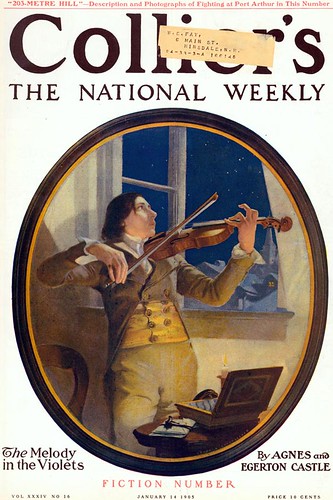
However, the competition between the brothers caused Frank to work at a killing pace, and Joe, a formidable pacer, soon outshone Frank. Eventually the same bond that held the brothers together split them apart.
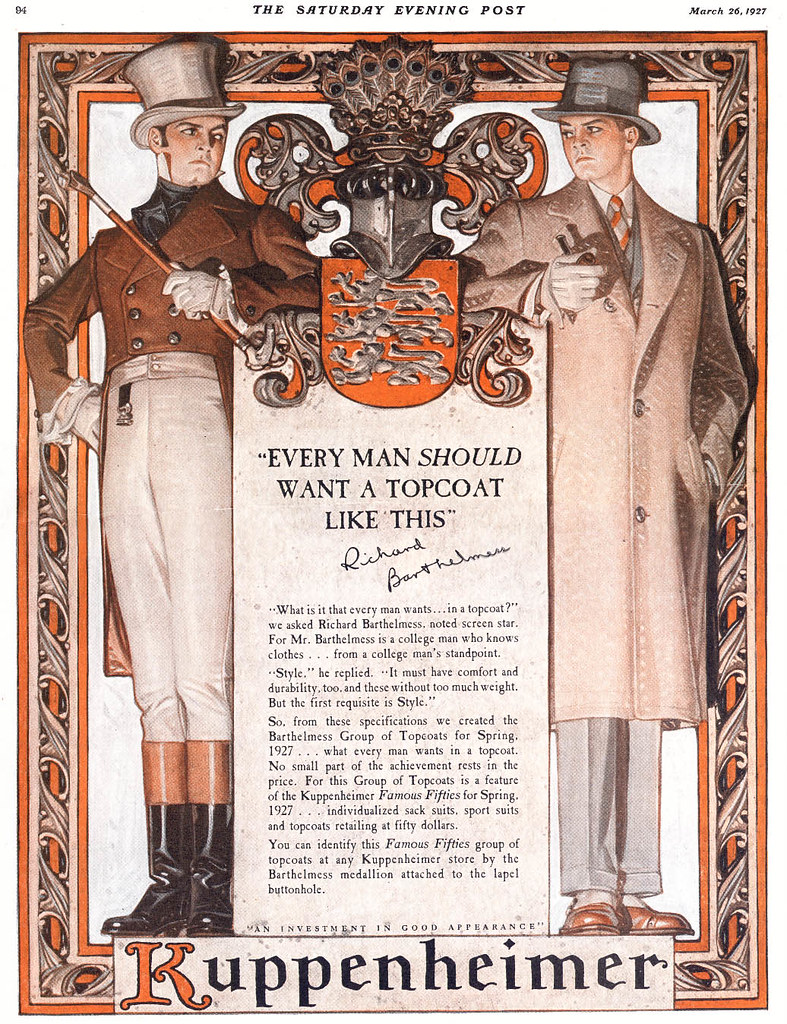
If Leyendecker's stature as an illustrator is invulnerable, the few known details of his life stand in stark contrast to his self-spun myth of artist-as-superman. In person, he was very shy and spoke with a stutter. Moreover, he was homosexual in an era when exposure meant ruin. He lived as a virtual recluse, locked in struggles of power and love in an ivory tower, and driven by impossible goals, leading to tragedy.

* Today's text is courtesy of the Norman Rockwell Museum, and is modified from Roger T. Reed's catalogue text from the 1997-98 Leyendecker Retrospective show.
The Norman Rockwell painting in today's post is "Freedom from Want," 1943. Oil on canvas, 45 ¾ x 35 ½" Story illustration for The Saturday Evening Post, March 6, 1943 ©1943 SEPS: Licensed by Curtis Publishing, Indianapolis, IN From the permanent collection of Norman Rockwell Museum
The Saturday Evening Post covers by JC Leyendecker in today's post are © Curtis Publishing, Indianapolis, IN
* The Frank Leyendecker Collier's cover in today's post is from the Flickr collection of James Blah.






0 comments:
Post a Comment